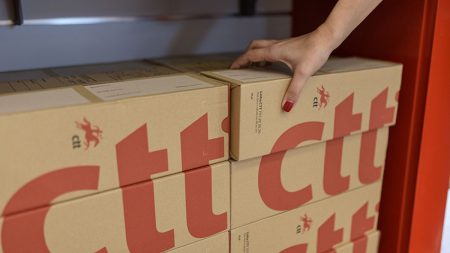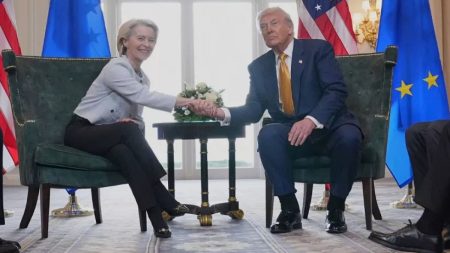Monte dei Paschi di Siena’s audacious €13.3 billion takeover bid for Mediobanca sent ripples through the Italian banking sector, marking a potential turning point for both institutions and the landscape of Italian finance. The offer, valuing Mediobanca shares at a 5% premium, represents a bold move by the historically troubled Monte dei Paschi, a bank significantly smaller than its target. This David-versus-Goliath scenario has captivated market observers, raising questions about the feasibility and strategic implications of such a merger. The proposed acquisition aims to create a more robust and profitable entity, leveraging synergies estimated at €700 million annually. While the market reacted with mixed sentiment, with Mediobanca shares surging and Monte dei Paschi shares dipping, the long-term consequences remain to be seen.
The timing of the bid is particularly noteworthy, coming on the heels of Monte dei Paschi’s successful restructuring and partial privatization. The Italian government, having bailed out the bank in 2017, has gradually reduced its stake and sought new partners. The emergence of influential investors like Delfin and Caltagirone, who hold significant stakes in both Monte dei Paschi and Mediobanca, adds another layer of complexity to the situation. Their involvement suggests a potential power play within the Italian banking sector, with the takeover bid potentially consolidating their influence and reshaping the competitive dynamics.
Monte dei Paschi’s bid for Mediobanca is not an isolated event but rather unfolds against a backdrop of ongoing consolidation within the Italian banking sector. Recent months have witnessed a flurry of merger attempts and acquisitions, reflecting a broader trend towards creating larger, more resilient institutions capable of competing on a European and global scale. The Italian government’s previous aspirations to merge Monte dei Paschi with Banco BPM, creating a national champion, were thwarted by UniCredit’s pursuit of its own expansion strategy. This competitive landscape adds pressure on smaller banks like Monte dei Paschi to seek strategic partnerships and acquisitions to ensure their long-term viability.
The proposed merger presents both opportunities and challenges for the involved parties. For Monte dei Paschi, acquiring Mediobanca represents a chance to significantly expand its operations, gain access to new markets and expertise, and bolster its capital position. However, the sheer size difference between the two banks raises concerns about integration complexities and the potential strain on Monte dei Paschi’s resources. For Mediobanca, the takeover bid presents a potential threat to its independence and strategic direction. The bank’s shareholders will need to carefully weigh the offered premium against the potential long-term benefits and risks of being absorbed by a smaller, albeit revitalized, competitor.
The success of the takeover bid hinges on several factors, including regulatory approval, shareholder support, and the ability of the two banks to effectively integrate their operations. The Italian government’s stance on the merger will be crucial, given its historical involvement with Monte dei Paschi and its broader interest in maintaining a stable and competitive banking sector. Shareholders in both banks will need to assess the long-term value creation potential of the merger, considering the potential synergies, risks, and alternative strategic options. Furthermore, the cultural and operational differences between the two institutions will require careful management to ensure a smooth transition and avoid disruptions to business operations.
The potential ramifications of this merger extend beyond the immediate fate of Monte dei Paschi and Mediobanca. A successful acquisition could trigger further consolidation within the Italian banking sector, as other institutions seek to adapt to the changing competitive landscape. It could also influence the broader European banking sector, potentially inspiring similar cross-border mergers and acquisitions. The outcome of this bold move by Monte dei Paschi will undoubtedly shape the future of Italian finance and serve as a case study for the challenges and opportunities of consolidation in the banking industry. Ultimately, the success or failure of the merger will depend on the strategic vision, execution capabilities, and collaborative spirit of the leadership teams involved.














